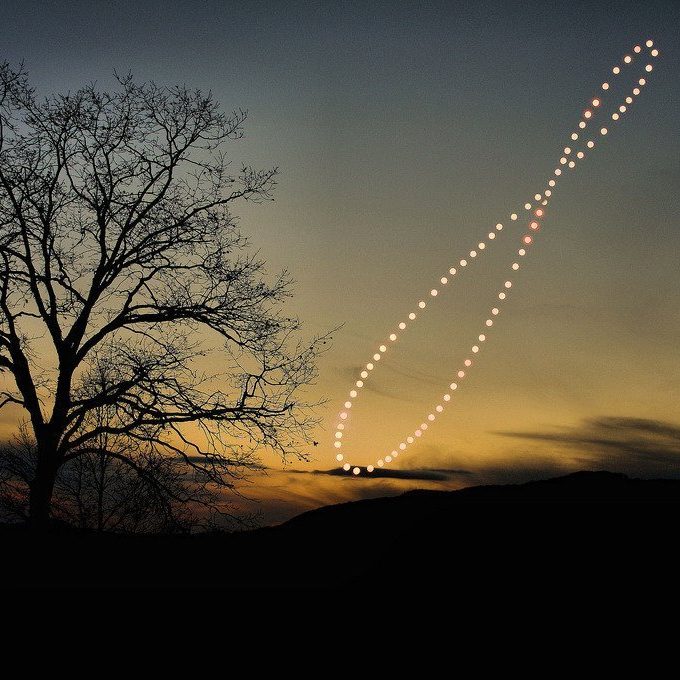
Image Credit: Giuseppe Donatiello
For the first several days of March, Mercury will be visible early in the evening, very close to the Sun. It will then be lost in the Sun’s glare until the 23rd, when it will appear in the morning sky. Reddish-hued Mars may also be seen in the early evening skies while Jupiter, Saturn, and Venus will shine brightly in the pre-dawn skies toward the east.
As for the Moon, the phases fall on the following dates:
New Moon – March 6
First Quarter – March 14
Full Moon – March 20
Third Quarter – March 27
The Reasons for the Seasons
We humans commonly align our lives around seasons. There’s the growing season, baseball season, and hunting season (including Elmer Fudd’s beloved “wabbit” season). The most widely recognized seasons are the astronomically-defined divisions (spring, summer, winter, fall) manifested by changes in weather and the amount of daylight. March brings the first of these, spring, on the 20th.
The first day of spring this year is March 20, making this a good time to talk about the seasons. A common misconception claims the seasons change because of Earth’s varying distance from the Sun. This idea suggests summer takes place when Earth is closest to the Sun (perihelion) and winter when Earth is furthest from the Sun (aphelion). If this were the case, the Northern and Southern Hemispheres should always share the same season, but the opposite is true: Northern Hemisphere winter coincides with Southern Hemisphere summer, and vice versa. Furthermore, Earth is closest to the Sun in January, which is winter in the Northern Hemisphere.
Seasons actually occur because Earth is tilted on its axis, at an angle of 23.5 degrees (mounted Earth globes demonstrate this principle, with the globe tilted in relation to its base). The hemisphere pointing toward the Sun receives more direct sunlight, and thus experiences higher temperatures, than the hemisphere pointed away. When neither hemisphere tilts toward the Sun, the sunlight hits both hemispheres equally. This represents an equinox (meaning “equal night”), when the Sun is directly above Earth’s equator.
Each day, the Sun rises a little north or a little south from the previous day, as described below. On or around March 21, the spring, or vernal, equinox occurs in the Northern Hemisphere when the Sun crosses the equator moving northward. To be clear, the Sun itself is not changing position. Rather, the combination of Earth’s orbit and axial tilt causes the apparent movement of the Sun. Thus, when we refer to solar motion, we must remember this represents movements of Earth that cause relative change of Earth’s orientation to the Sun.
The northward migration of the Sun continues until it reaches its most northerly point, called the Tropic of Cancer. This is predictably at 23.5 degrees north latitude, the same as Earth’s axial tilt. This arrival at the Tropic of Cancer occurs on or around June 21 and marks the Northern Hemisphere’s summer solstice, the first day of summer.
The Sun’s direction then reverses and moves back toward the equator, reaching it on or around September 23. This marks the Northern Hemisphere’s fall, or autumnal, equinox, and is the first day of fall. The Sun continues southward until it reaches its most southerly position, the Tropic of Capricorn, which is located at 23.5 degrees south latitude. Occurring on or around December 22, this marks winter solstice – the first day of winter in the Northern Hemisphere. The Sun then reverses direction back toward the equator, continuing its ongoing cycle of movement.
March thus brings the first change of seasons for the year as well as a collection of bright planets visible in the morning sky. Next month, we’ll look forward to the Lyrid Meteor Shower, whose parent comet body is Comet Thatcher.